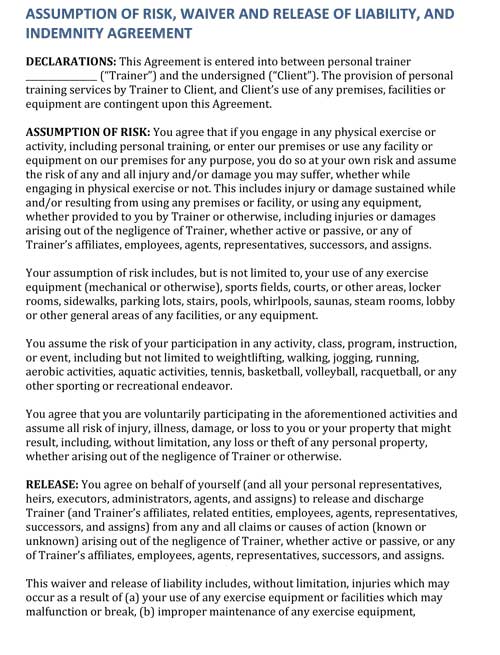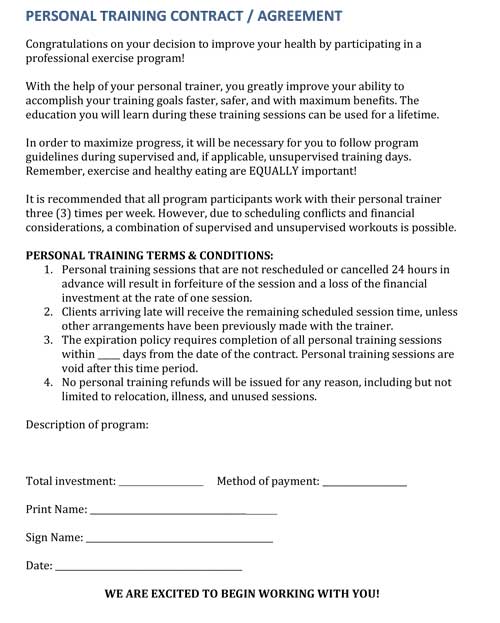

Many personal trainers get into the fitness business because they love exercising and are keen to help clients get great results.
This is great, but the fitness side of personal training is just one aspect of your career that you need to consider . Being a personal trainer means being a business owner. It's time to take care of business!

Just as with any business, a professional personal training business includes processes and paperwork that will help things run smoothly, and will help you manage your clients.
Below, you will find the most important personal training forms that you should at least consider using in your business.
No two personal trainers offer identical services; therefore, no two personal trainers will use identical paperwork .
Click the form images below to download a PDF copy for FREE. Use these personal training forms as a starting place. Mould them to fit your business and the clientele you serve.
The following is a list of forms you may want to use in your personal training business. These are listed somewhat in order of priority (i.e. a PAR-Q and liability waiver are "must-haves," while some of the forms listed further down are optional).
The PAR-Q (i.e. Physical Activity Readiness Questionnaire) is a standardized form that helps you quickly assess whether or not a person is physically ready to begin a new exercise program.
It's simple to use and clearly indicates the next step for your prospective client: Either begin exercising OR see a doctor to get medical clearance before beginning.

Each client you work with represents risk to your business and to yourself as the service provider. While a waiver of liability will not protect you if your service exposes your clients to unreasonable risk, it can help protect you if an accident were to occur under reasonable risk associated with exercise.
Your insurance company or certification body may also require that a form similar to this be completed by every new client. Use it!

A new client agreement is very helpful for outlining expectations. What specific package is being purchased? What is the purchase price? What is your cancellation policy? Etc.
Covering as many of these details in a signed form can help prevent misunderstandings and awkward discussions in the future (e.g. "Sorry I missed our session, but I was _______. I don't have to pay for it, do I?").

Some trainers choose to assess their clients informally by discussing recent exercise history, measuring the client's weight or body fat, etc. However, putting together a formal assessment form is VERY helpful when it comes time to show that you delivered value.
Being able to show a client changes in physical measurements, flexibility, strength, cardiovascular performance, etc., can be the evidence you need to secure future sales with this client. Measuring progress simply by having clients step on the scale is too narrow a view of their true progress.
You can use a form like the one below, or track results online using a personal training software like this.

The PAR-Q form covers basic medical questioning, but a more detailed form can be very helpful to ensure that the workouts you plan are, in fact, safe and appropriate for your new clients.

This form can be as much for your client as it is for yourself. Walking your new clients through a goal-setting session can help them "buy in" to the work you'll be doing, and it can serve as a motivational reminder during times when they get busy or simply don't feel like pushing themselves.

This is another form that can help you reduce your own professional liability. It helps clients understand exactly what their fitness assessment will entail, and gives them a chance to ask questions before you dive in.

While not needed from a safety or liability perspective, gaining client referrals IS crucial for your business's on-going growth. If your clients are satisfied with the service you provide, they will happily offer referrals. if you ask them to!

There aren't likely any legal ramifications if you choose not to add this form to your website, but it certainly can't hurt. Plus, online advertising options (e.g. Facebook, Google Adwords) require a privacy policy on any page that you send paid-for traffic to.
Your clients do NOT need to sign this form. It's purely for informational purposes.